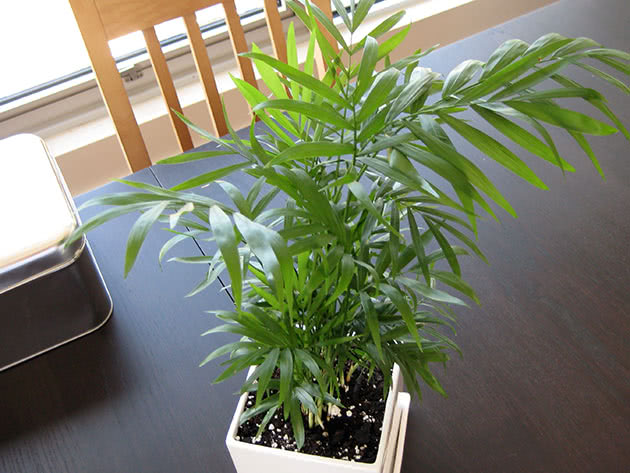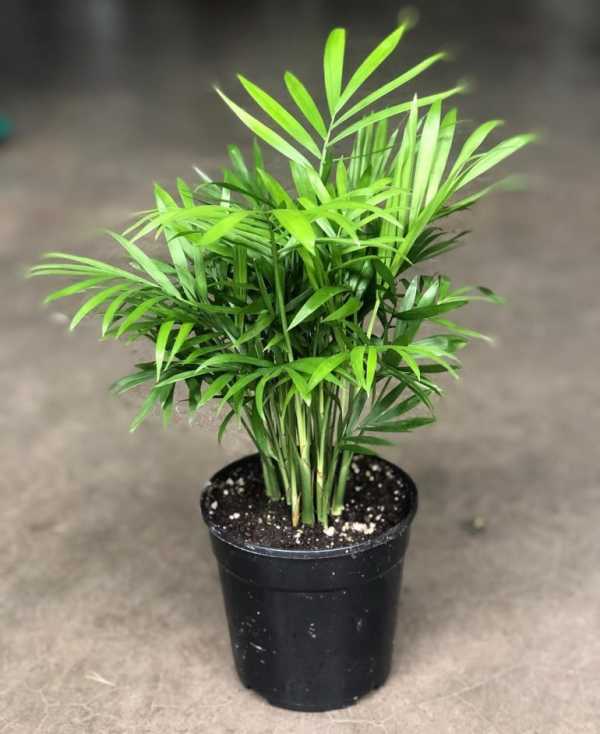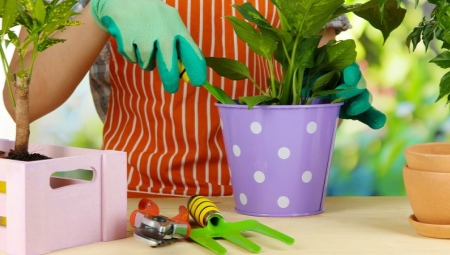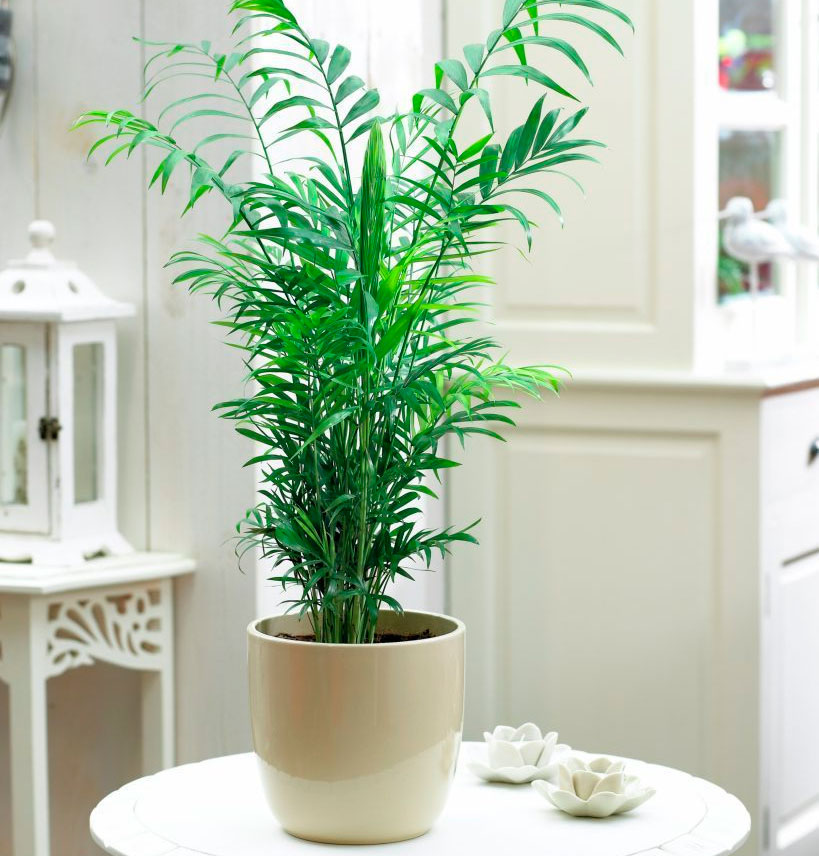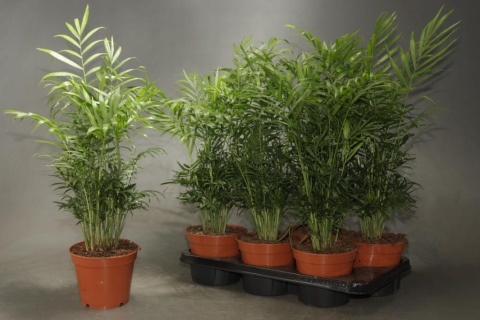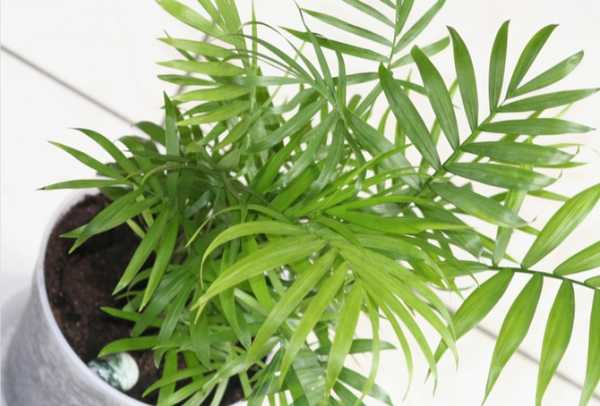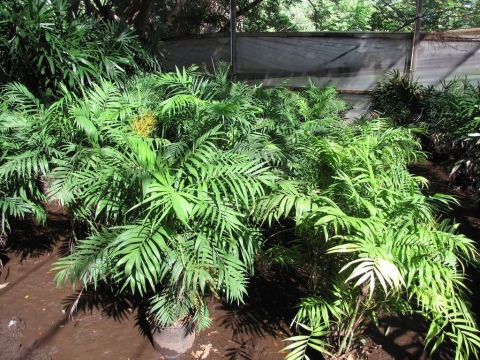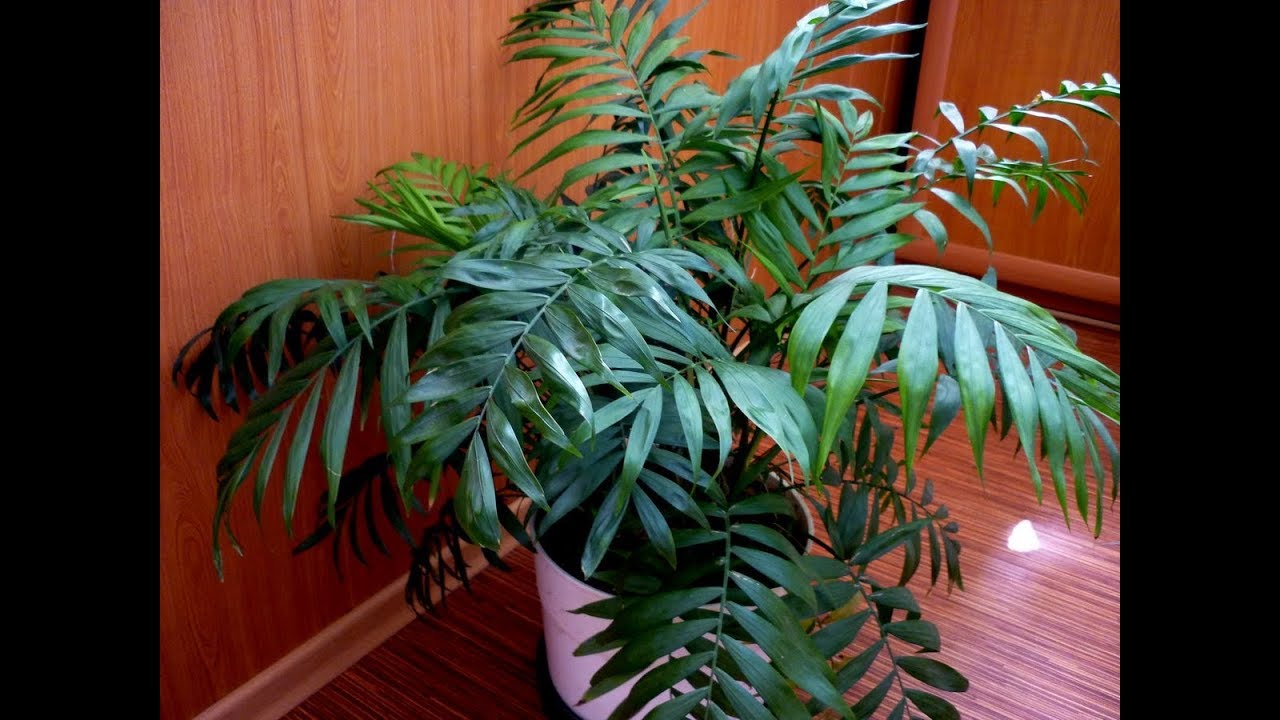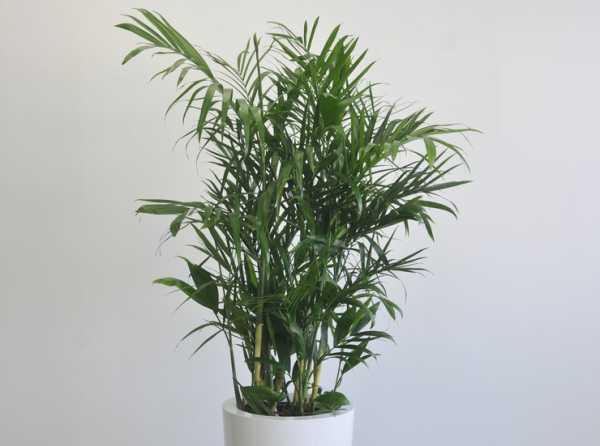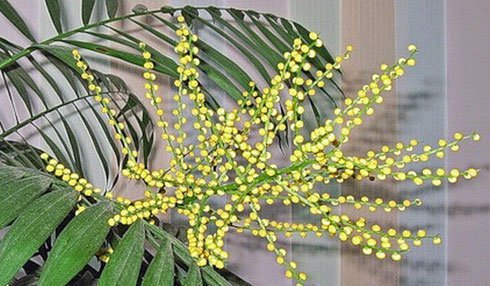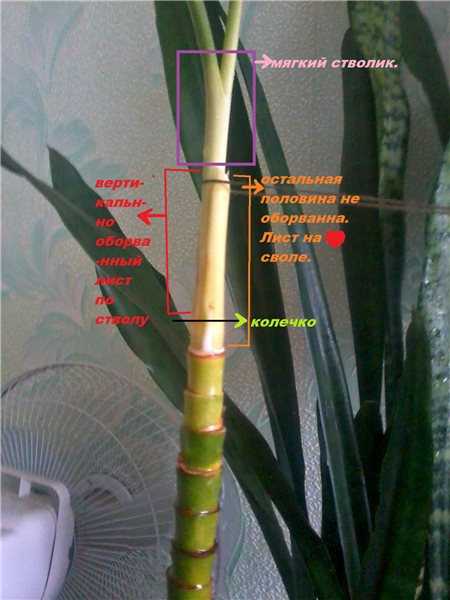Mandatory conditions
It is always necessary to monitor the ground. You can purchase a ready-made composition that is suitable just for palm trees. You can cook the substrate yourself. To do this, it is supposed to mix 2 parts of a fibrous-peat substrate, fresh humus and sod-type soil. Then add 1 more part of sand there (the fractions should be medium).
The correct composition of the soil is a very important component, since only light and loose soil will ensure the normal development of the plant due to ventilation. In addition, it will prevent soil acidification.
It is imperative to make drainage, for this, elements of the middle fraction are also needed. For example, broken ceramics, pebbles, polystyrene, expanded clay are suitable.
Filling of soil for replanting
It is also very important to choose the right container. It should be voluminous
It is best to choose one that is quite tall. The container must be larger in height than in width. This is due to the fact that the roots should not diverge to the sides, but deepen. Clay pots are great. You can also use tubs made of wooden boards. These natural materials are not only breathable, but they can also decorate a room.
It is periodically required to fertilize the soil. At home, without feeding, chamedorea simply will not survive and will not be able to fully develop. A natural fertilizer called "Palma" is perfect for her. Its manufacturer is the Garden of Miracles company. This solution is very concentrated. It is prepared on the basis of natural ingredients, earthworm waste is used. The product contains optimal amounts of potassium, phosphorus and nitrogen, which is ideal for hamedorrhea. Top dressing is supposed to be applied several times a year, and the frequency will be different. The first period falls on the beginning of March - the end of September.
Home care
Hamedorea feels great growing at home. The main thing is to take care of a comfortable environment for this adorable green pet. Let's take a look at how to provide hamedoree with optimal conditions for growth.
Seat selection
Indoor palms are allowed to be placed even in the shaded corners of the dwelling - in such conditions they feel normal. However, shading should be moderate. It is not recommended to place your pet in too dark places. It is also not allowed to put it in direct sunlight - such conditions will be destructive for the plant.
Lighting must be moderate. A place in partial shade is suitable. The appearance of the palm tree will depend on the intensity of the light. The bright ultraviolet rays will simply burn out the foliage of the crop.
Hamedorea is divided into many subspecies, but most of them grow large. For such pets, it is advisable to allocate a sufficient place where they will not be too crowded. It is recommended to provide for hamedorea an area in the corner of the room, preferably close to the window openings. A partition located between the windows is also suitable for this. Here, the plant will look especially attractive and neat, and also will not interfere with household members.
When choosing the optimal space for hamedorea, one should not forget that too sharp a change in temperature values can have an extremely negative effect on the health of the culture. After the purchase, the palm tree must be placed where it will not be exposed to the harmful effects of drafts. The optimum temperature for keeping in summer is + 16 ... 20 degrees, and in winter - + 12 ... 15 degrees Celsius.
Soil for planting
Any suitable reservoir that is highly resistant can be used as a pot for the plant in question. The material of the vessel is unimportant. The main condition concerns exactly stability, because chamedorea grows tall, and its leaves are not the most spreading.
Having picked up a pot for the plant, the size of which will correspond to it, you can start preparing the earth. A good-quality potting mix for the palm in question, ready-made, is sold at a garden store. You can buy the usual universal compound designed for planting indoor plants. It is also permissible to independently make a suitable mixture. To do this, you will need to combine such constituent components as peat, humus, river sand, turf soil. All components are taken in equal parts. A drain must be placed at the bottom of the pot.
Watering
When caring for a room palm, you need to remember about proper watering. It is necessary to ensure that the clod of earth does not dry out. But it is also not allowed to fill the pet with a huge amount of water - this will only cause serious harm to it. Wetland is the best condition for the formation of dangerous bacteria and aggressive pests.
The earth should always be slightly moist - in everything you need to observe moderation. Liquid that will accumulate in the pan must be poured out regularly. We must not forget about it.
Top dressing and fertilizers
If you want to speed up the growth of your home palm, you should consider applying suitable fertilizers. It must be borne in mind that feeding the culture in question is required only at the moments when its active growth falls. This period lasts from early April to late September. It is at this time that fertilizers need to be applied 2 times a month.
The latter should be released specifically for palm trees. It is allowed to use mineral compositions of a universal type.
Transfer
There are florists who recommend transplanting chamedorea based on its age mark. Young plants will need this procedure annually, and adult pets - every 3 years. However, many professionals who have long been involved in the cultivation of such crops argue that a palm tree should be transplanted only as needed.
A transplant may be required in that situation if the pet has become too cramped in its pot. Then it will need to be moved to a more spacious container. As the palm ages, it may need to be planted in a barrel or special tub. It is much more difficult to move an adult pet, since it will have more impressive weight and will be voluminous. In such situations, instead of replanting, it is permissible to renew the topsoil.
Varieties and photos
Below are photos, names and descriptions of hamedorea varieties suitable for reproduction and care at home:
Bridble
A fairly well-known variety that is a hybrid. Bridble has an external resemblance to the parent plant - Chamedorea graceful, with the exception of some differences:
- Bridble has emerald green leaves;
- the size of the flowers is larger;
- flowers exude a pleasant aroma.
What the Hamedorea Bridble variety looks like can be seen in the photo below:
Elegans
Characteristic features of the Elegance variety:
- has bamboo stems;
- the shape of the leaves is arcuate, pinnate;
- color - light green;
- flowering occurs at an early age, when chamedorea grows 30-35 cm in height;
- the flowers are light yellow or red-orange in color, they are replaced by black berries of a small size.
The photo below shows Hamedorea Elegance:
High
The chamedorea tall flower is a compact bush, which in the wild reaches five meters in height; at home, it is, of course, much smaller.
Each year, several new thin bamboo-shaped trunks are formed from the roots.Each of them contains from four to six curved cirrus leaves of a dark green color with pointed lanceolate leaf plates.
Three to four years after planting, high chamedorea may bloom. Inflorescence panicles consist of small fragrant, very bright flowers with an orange-red color.
Arenberg
In the hamedorea Arenberg, the trunk is single, thin, up to two meters high. Cirrus leaves consist of twelve to fifteen pairs of leaf plates up to thirty centimeters long and about ten wide.
Hamedorea graceful (lat.Chamaedorea elegans)
It has only 1 trunk, about 2 m high. The crown ends with a crown of 6-7 large cirrus leaves. The leaf blade is formed from 8-15 "feathers" of a dark emerald tone.
The inflorescence is a panicle of red-orange cobs.
Chamaedorea elegans
Ernest-August
A palm tree with such an unusual name has the following characteristics:
- it is characterized by slow growth and does not require frequent correction;
- the color of the leaves is dark green, and the leaves themselves are not divided into segments, like in other varieties;
- Ernest-August's flowers are red, spherical and collected in spreading inflorescences;
- the leaf plates are wide, and in some cases are divided at the end into two parts;
- the shape of the tree is stem.
In the photo below, the variety of Hamedoreya Ernest-August:
Hamedorea metal (lat.Chamaedorea Metallica)
A shade-loving palm tree that does not grow higher than 2 m. The name was given to it by the color of the foliage, reminiscent of a metallic tide.
The leaf is wide, solid, bifurcating at the end. In old plants, the trunk becomes woody.
Chamaedorea Metallica
Monochromatic
This variety has a number of advantages over the others:
- considered quite hardy and unpretentious;
- easily adapts to lack of light.
Hamedorea monochromatic has an external resemblance to graceful Hamedorea, but there are a number of differences:
- flowers are yellow;
- her leaves are longer and thinner;
- internodes are elongated.
If you plant this variety in a wide bowl, you will get dense thickets.
Spectacular and incomparable hamedorea
Hamedorea (Chamaedorea) - the genus unites low-growing woody, flowering plants, the number of which has one hundred and thirty-three varieties and occupies the main place in the Palm family.
The homeland of Hamedorea is the mountainous territories of both the South and the Center of America, as well as the Mexican mountain ranges. Natural comfortable conditions allow the hamedorea palm tree to reach two meters in height. The root system of a gorgeous flower forms a huge number of three centimeter bamboo-like stems on which green original feathery leaves rise. Young leaves are similar to feathers.
The local population feeds on the unopened male Hamedorea inflorescences, which are called "pakaya". In tropical forests, the mountain palm hamedorea takes a fancy to places near a tall tree to hide from the direct rays of the sun that burn the leaves in summer.
The names in translation from the Greek language "chamai" - dwarf and "dorea" - a gift.
In indoor conditions, flower lovers grow chamedorea as a leafy-decorative miracle, thanks to its graceful feathery leaves.
When buying a palm tree to your house, the question arises: how fast is chamedorea growing? This indoor palm grows slowly. Reaching adulthood, it acquires a height of one hundred and twenty centimeters. Most importantly, the chamedorea bamboo palm tree looks charming at any age. Tiny palms have proven themselves perfectly in compositions located in glass vessels. Larger specimens can be a wonderful decoration for gardens, greenhouses, offices.
It is also interesting: how does chamedorea bloom? There is no particular decorative value from flowers. The green branch of the peduncle is all covered with delicate ones that resemble mimosa flowers. The clear contrast with the dark palm leaves gives the plant more originality.By the way, the flowering of room chamedorea can be seen by watching the video.
Hamedorea's photo can be viewed in the next section of the article.
Indoor varieties of mini-palm trees
The genus Hamedorea includes more than 100 species. Several of them have been successfully adapted for growing at home. A brief description and photo will help you understand the palm variety:
- Hamedorea is graceful. It is also known by the names beautiful, elegance. Forms a sprawling bush of thin branches with feathery leaves of a pleasant green hue. Up to 7 such stems grow from each root. The bush turns out to be spreading due to the bending of the leaves in an arc. Blooms frequently. The inflorescences are composed of small orange-red flowers.
- Hamedorea is one-color. It is considered the most unpretentious. Similar to hamedorea elegans, but forms a central strong trunk up to 1 m high. It consists of internodes of dead leaves. Side stems add splendor to the bush. The flowers are yellow.
- Hamedorea Ernest-August. Forms a single, relatively thick reed trunk from dead plant parts. Air roots appear in the stem nodes, so this type of chamedorea is easily propagated by cuttings. The top of the palm tree is decorated with large, solid oval leaves with a forked end. The color is rich. Forms flowers in the form of balls.
- Hamedorea is high. Consists of a collection of thin reed stems. At the top of each grow 4-6 dissected feathery leaves of a rich green hue. The flowers of the palm are bright orange, paniculate, fragrant.
- Hamedorea Bridble. More like other wild fellows. It only has a miniature size, up to 1.5 m. The inflorescences of this palm tree are also brighter and more fragrant.

Care
When grown at home, you should always know all the nuances of caring for a Mediterranean palm tree and follow all the rules for its maintenance. We will talk about this further.
Lighting
Hamerops prefers a lot of light, despite the fact that this plant is shade tolerant. Shrubs are not afraid of direct sunlight, so they can be safely taken out to an open balcony, planted in a garden or a summer cottage.
Temperature regime
To grow successfully at home, a palm tree needs warmth. 23-25 degrees is the optimal temperature indicator for hamerops. However, in winter, it should be kept cool at a temperature of 6-10 degrees.
Ventilate the room regularly, but avoid drafts.
Humidity and watering
In the summer heat, chamerops requires abundant watering, while in winter watering should be reduced.
It is important to adhere to the rule here: the brighter the light in the room and the higher the air temperature in it, the more intensive the watering should be.
At the same time, the air humidity should be high. The palm should be sprayed every day, and occasionally have a warm shower.
Watering is reduced when changing from summer to winter. During this period, it should be moderate, not abundant. Humidifying the hamerops is also not worth it.
Transfer
Hamerops does not like transplanting, therefore, the procedure should be carried out only when the roots become cramped in the pot.
Rejuvenate an old plant in the spring and summer. The transplant is carried out once every 4-5 years as the palm grows. A young palm tree is transplanted 2-3 years later in the spring.
Priming
The soil for growing young plants should consist of leaf (humus) earth and river sand in equal proportions. An adult palm is transplanted into a harder soil, consisting of clay turf and leafy soil in equal proportions.
 The sand for growing adult plants requires half as much as for young ones.
The sand for growing adult plants requires half as much as for young ones.
An ideal place for growing hamerops is a spacious tub, displayed on the balcony, summer veranda or outdoors - where there are no drafts.
For growing hamerops, you can purchase a ready-made substrate for palm trees.
Top dressing
For feeding, mineral fertilizers should be used. They are brought in weekly if the hamerops is grown on the balcony. In room conditions, it will be enough to fertilize 2 times a month. In winter, feeding is not required at all.
Dormant period
In winter, maximum rest is required. The room where the palm tree will winter should be cool. You should not moisten the leaves at this time, but you will need to remove dust from them with a sponge.
Characteristics and features of indoor palm
Hamedorea is a stunted tree of the Palm or Arecaceae family. Its natural range and place of wide distribution are the equatorial regions of North America and the northern regions of South America. The culture grows in humid tropical foothills, under the shade of larger trees. Hamedorea forms a tree or shrub with many equivalent shoots or vines. The height of the largest varieties reaches 5 m, but mostly palms do not even reach 3 m.At home, chamedorea grows up to 1.5 m and has a trunk thickness of up to 3 cm.
The beauty of the plant lies in the graceful leaf webs. Their color is light green. The shape is feathery. Chamedorea blooms at a young age. Small inflorescences are not of great decorative value, but in general they are neat and pretty (see photo).

Other features of exotic:
- The plant develops slowly. A specimen planted from a seed only spends up to six months for germination. In other cases, growth will be slightly faster.
- In nature, chamedorea is miniature, but at home it will still take up a lot of space. Give your palm some space.
- Greenery effectively cleans the air in the house from harmful particles: benzene, formaldehyde, etc.
What hamedorea looks like
Chamedorea palm is a plant that belongs to the Palm family. It grows mainly in the forest zones of South America. Chamaedorea has another name - mountain palm. The plant is both in the form of a tree and in the form of a shrub. Maximum height 5 m.

House palm hamedorea
Common varieties
The most common crop varieties include:
- hamedreya is graceful. A tree up to 2 m high with yellow inflorescences;
- hamedorea Bridble. A small shrub, reaching a height of 1.5 m. As part of home care, Bridble chamedorea requires regular feeding, watering and pruning;
- chamedorea is high. A sturdy tree reaching a height of 4 m;
- cascading chamedorea. Plant with numerous stems and small thin leaves. Height up to 3 m.
For your information! One of the rare and beautiful species is metallic chamedorea. The tree features dark foliage that shines in the sun like polished silver. The plant reaches a height of 2.5 m.
Healing properties
It is recommended to plant palm trees in living rooms. They help cleanse the air from germs and bacteria, thereby preventing the development of many pathologies.
History of appearance
The plant first appeared in Central and South America and was used as food instead of vegetables. Over time, palm trees began to be used to ennoble the territory and purify the air in the house.
For your information! Since ancient times, it was believed that chamedorea is a plant that attracts positive energy. Many spiritual leaders meditated near the flower and engaged in self-knowledge.
Palm hamedorea - description
Hamedorea is an ornamental deciduous plant. It is because of the beautiful feathery leaves that this palm is grown at home. Chamedorea flowers are devoid of brightness and decorativeness and are interesting only because they can bloom at any time of the year. They are small, slightly velvety, bright yellow in color, appear on the peduncle in random order along its entire length. Many growers generally recommend removing flowers at the budding stage so as not to weaken the plant by flowering.
Dracaena at home - everything you need to know about care
What else should you consider if you decide to grow chamedorea at home? Get ready for the fact that this palm tree grows slowly, however, like other palms, especially those specimens that are grown from seeds: a sprout hatches from a seed for an incredibly long time - it can "sit" motionless in the ground for more than six months.
In the photo: Growing hamedorea in a pot
Well, and most importantly, what you need to know before planting or buying a chamedorea: she loves very humid air. And now about the issues of leaving in more detail.
Care
Caring for a plant consists in adhering to the watering regime, periodic feeding, as well as in observing all the conditions to which it is accustomed in its natural environment.
Lighting
Mountain palm grows in the lower tier of the tropics, therefore, does not need a lot of light. It is enough to put the flower pot in the shade or partial shade and it will feel good.
Hamedorea feels great under artificial lighting in a greenhouse or in a shaded part of the apartment.
Temperature regime
This exotic shrub has certain temperature requirements:
- In the heat, stick to a figure of at least 27 degrees.
- If you sharply reduce the temperature in the room where the flower is located to +10 degrees, then it will die. Even at +12, the flower begins to lose leaves, becomes lethargic.
- Temperature jumps are fraught for the plant, and if the difference in indicators reaches 7 degrees, it will die.
- The top layer of soil should warm up well, so the pot should not be placed on cold surfaces and drafts. The soil temperature should be identical to the air temperature.
- In winter, a mountain palm has enough temperature of 16-22 degrees.
Humidity and watering
The humidity level for chamedorea should not drop below 55%, otherwise the flower will stop developing, lose its splendor and die
Watering is also important. The soil should always be moistened, and watering should be done when the soil is half dry
An excess of moisture has a bad effect on the life of the mountain palm. The watering regime should be adjusted from the first days of the flower's stay in the house.
For foliage spraying and watering, you need soft, warm water at room temperature.
Top dressing
Fertilizers for chamedorea must be selected very carefully. Folk remedies in this case will not work and can harm an exotic palm tree.
Fertilizers are applied to the soil from April to August with a frequency of 1-2 times a month. It was at this time that the intensive growth of the shrub was observed. To maintain nutrients in the soil, specialized mineral fertilizers in granules, as well as solutions, are used.
Transfer
The procedure is carried out with extreme care so as not to harm the exotic beauty. The instruction is as follows:
- We sterilize the previously prepared soil, and when the purchased flower gets used to the new conditions (after 10-14 days) we transplant.
- If the tree is young, it must be transplanted annually. Adult bushes are transplanted after 3-4 years.
- We cover the bottom of the pot with drainage, after which we pour in the substrate.
- We water the plant thoroughly 30 minutes before the start of the procedure, so that it can be easily removed along with the earthy clod without damaging the roots.
- We cross the chamedorea, untangle the roots and place them in fresh soil, sprinkle the empty areas with earth and water thoroughly.
If there is no need for transplanting and there is enough space for the tree in the old pot, just renew the top layer of the earth.
Priming
The easiest way is to purchase ready-made primer in a specialized store. Self-cooking is also acceptable and includes a number of main components:
- sod land - 50%,
- leafy ground - 20%,
- peat - 20%,
- quartz sand (sieved) - 10%.
The soil should not only be of good quality, but also sterile.Disinfection can be done by calcining or freezing to prevent pests and possible diseases.
Pot
The main requirement for a pot is its stability, because as the palm grows, it will gain significant weight. The volume of the container depends on the height of the tree:
- for young palms no higher than 50 cm. in height - 12-15 cm;
- above this indicator - 16-25 cm.
Before planting, several holes should be made at the bottom for root germination, and then a drainage layer should be laid. You should not plant a plant immediately in a large pot - the capacity needs to be increased as it grows.
Pruning
Pruning helps to get rid of diseased parts of the plant, give the tree a fresh look, and prevent the spread of various infections. Dried, damaged and diseased leaves are subject to pruning.
The procedure should be carried out as needed, using pre-disinfected scissors. At the end of the process, the hamedorea should be treated with fungicides, and the pruning itself should be carried out as close to the base as possible.
Dormant period
Hamedorea is a tropical plant and therefore needs a dormant period. "Wintering" of a mountain palm falls in the middle of autumn - the end of winter. The main task of the owner is to ensure a comfortable temperature regime - it is 10-15 degrees above 0. The temperature is reduced gradually, while reducing watering in mid-autumn.
Description of the Hamedorea palm
Chamaedorea is a very beautiful plant. It can grow up to 2 meters in height in its natural environment, but indoor species are usually much smaller. The leaves grow 30-60 cm, depending on the age of the palm. Young twigs are light green, but over time they become more saturated, green color. The life span of a culture is not less than 5 years, and under the right conditions it is much longer.

Hamedorea in nature can grow up to 2 m in height
Important!
Chamedorea grows very slowly - this is a feature of the indoor palm, so it is pointless to wait for active growth, even with fertilization. It can give only 2-3 new branches per year! The palm tree produces very unusual flowers
The peduncle is a green twig covered with small flowers. In appearance, the flower resembles a mimosa - it contrasts pleasantly with the green foliage. The scent can be strong or weak, depending on the type of flower. After the inflorescences, small fruits appear, resembling berries
The palm tree produces very unusual flowers. The peduncle is a green twig covered with small flowers. In appearance, the flower resembles a mimosa - it contrasts pleasantly with the green foliage. The scent can be strong or weak, depending on the type of flower. After the inflorescences, small fruits appear, resembling berries.


